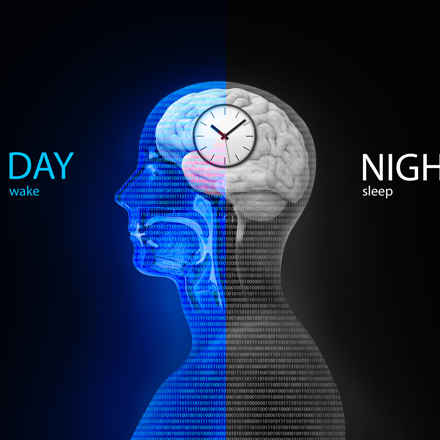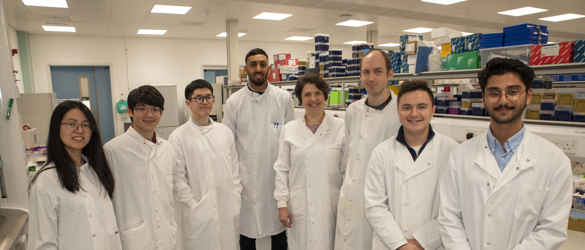The impact of misaligned daily light cycles on the development of diabetic retinopathy

Dr Eleni Beli, Queen’s University Belfast - £25,000
Circadian rhythms affect many processes in the eye. This research investigates the link between day length and the development of diabetic retinopathy (DR) by exposing mice to day lengths made artificially either longer or shorter than 24 hours.
What is the problem?
Diabetic retinopathy (DR) is a disease frequently seen in diabetic patients where the blood vessels of the retina become leaky, ultimately collapse and grow incorrectly and uncontrollably until they cause sight loss. Current therapies only target late stages of the disease and don’t work for all patients.
Modern lifestyles with longer artificial light exposure, longer food availability and night shift patterns challenge our circadian rhythm - the internal body clock that tells us when it’s time to wake or sleep. This can be particularly difficult for those with diabetes because it affects the regulation of the circadian rhythm.
Our circadian rhythm has long been known to affect the eye and disease progression as well as how treatments such as anti-VEGF and corticosteroids are absorbed by the body.
What did the project achieve?
This project looked at how diabetic retinopathy develops when daylight hours are changed. Mice were exposed to 22.5-hour or 27-hour day/night cycles and compared to a control group on a 24-hour cycle. The experiment confirms that circadian disruption combined with diabetes has significant effects on the thickness of the retina, the photoreceptors and blood supply. Effects were particularly pronounced in the group exposed to a shortened day/night cycle.
What’s next?
Data from this study on how the retina’s clock adjusts to new light schedules will be invaluable, not only to DR studies, but also to teams making more effective treatments for other macular conditions. It will also improve the therapies that we already use, such as anti-VEGF and corticosteroids, which are both influenced by circadian rhythms. The efficacy of these drugs will be improved by understanding the biochemistry behind them.
Results from this project supported a larger grant application and a project being co-funded with Diabetes UK.
Related projects
Shining new light on the body clock and retinopathy
Dr Eleni Beli takes a closer look at the impacts of disruptions to our body clock, to understand more about how eye damage can develop and progress.
See our other projects
Since 1987 the Macular Society has invested around £10 million in over 100 research projects.
Explore more research
Beating macular disease through funding medical research and improving the lives of those living with macular disease.
Get the latest research news from the Macular Society
To hear about life-changing research and treatments, subscribe to our monthly enewsletter today. Together we can Beat Macular Disease.
Sign up to our free email newsletter




